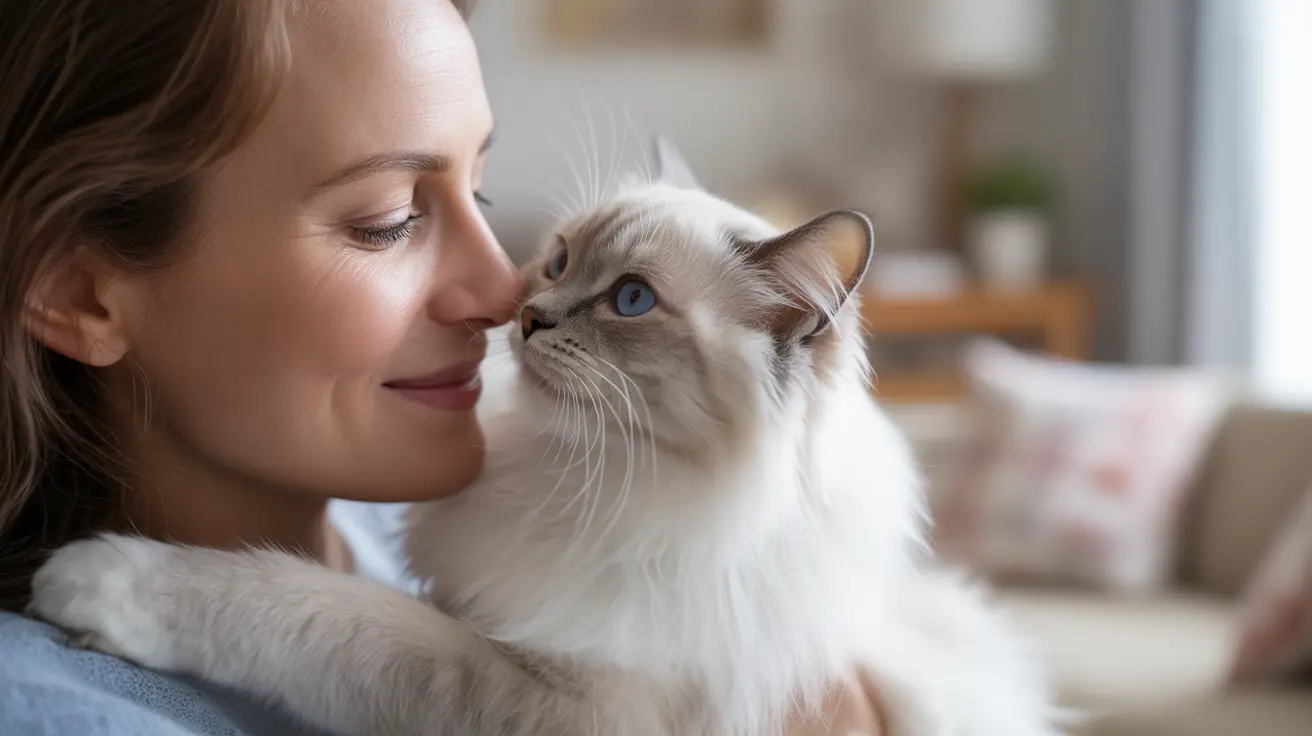Introduction
The mysterious bond between cats and their human companions has long fascinated both pet owners and researchers alike. One particularly intriguing aspect of this relationship is cats' apparent ability to sense depression and anxiety in humans. Through a combination of keen observation skills, evolutionary adaptations, and strong emotional bonds, our feline friends demonstrate remarkable sensitivity to human emotional states.
Recent scientific studies have confirmed what many cat owners have long suspected: cats can indeed detect and respond to changes in their owners' emotional well-being. This ability goes beyond simple behavioral observation, encompassing complex mechanisms of emotional recognition and response.
How Cats Detect Human Emotions
Cats employ multiple sophisticated methods to sense their owners' emotional states. Their acute observational skills allow them to pick up on subtle changes in facial expressions, body language, and daily routines. They're particularly attuned to variations in voice tone and pitch, which often change during periods of anxiety or depression.
Beyond visual and auditory cues, cats can detect physiological changes in their owners. These include alterations in breathing patterns, heart rate, and even body chemistry. Such changes often accompany emotional distress, making cats excellent monitors of their owners' mental state.
The Science Behind Feline Emotional Intelligence
Research from the University of Bari has demonstrated that cats can integrate both visual and auditory signals to recognize different human emotional states. This ability helps them distinguish between positive and negative emotions, allowing them to adjust their behavior accordingly.
A groundbreaking 2019 study revealed that cats form secure attachment bonds with their owners, similar to those observed in dogs and human infants. This emotional connection enhances their ability to recognize and respond to their owners' emotional states.
How Cats Respond to Human Anxiety and Depression
When cats sense their owners are experiencing emotional distress, they often display distinct behavioral changes. Many become more affectionate, increasing physical contact through purring, cuddling, or following their owner around. Some cats may bring toys or make gentle vocalizations in apparent attempts to offer comfort.
However, responses can vary significantly based on individual personality and past experiences. While some cats become more nurturing during their owner's emotional difficulties, others might maintain distance, particularly if they associate negative emotions with environmental stress.
The Therapeutic Benefits of Cat Companionship
The ability of cats to sense and respond to human emotions makes them valuable companions for individuals dealing with anxiety or depression. Their presence can help reduce feelings of loneliness and provide structure through daily care routines. The rhythmic sound of a cat's purr, typically ranging from 25-150 Hz, has been associated with reduced stress levels and potential healing properties.
Many mental health professionals now recognize cats as legitimate emotional support animals, acknowledging their unique ability to provide comfort and stability during difficult times.
Frequently Asked Questions
Can cats really sense when their owner is feeling depressed or anxious?
Yes, scientific research confirms that cats can detect changes in their owners' emotional states through various cues, including facial expressions, voice tone, and physiological changes.
How do cats detect changes in human emotions like depression or anxiety?
Cats use a combination of visual, auditory, and physical cues. They observe facial expressions, body language, voice changes, and can detect alterations in breathing patterns and heart rate.
What behaviors do cats show when they sense their owner is anxious or depressed?
Common responses include increased affection, purring, bringing toys, staying closer to their owner, and gentle vocalizations. Some cats may also become more protective or vigilant.
Can having a cat help reduce feelings of depression or anxiety in people?
Yes, cat companionship can help alleviate symptoms of depression and anxiety through physical comfort, emotional support, and the establishment of daily routines.
Why do some cats become more affectionate while others withdraw when their owner is upset?
Individual personality differences, past experiences, and the strength of the cat-owner bond influence how each cat responds to human emotional distress. Some cats may feel overwhelmed by intense emotions and need space, while others instinctively offer comfort.
Conclusion
The evidence is clear: cats possess a remarkable ability to sense and respond to human emotional states, including depression and anxiety. This capability, combined with their natural tendency to provide comfort and companionship, makes them invaluable partners in supporting mental health and emotional well-being.






